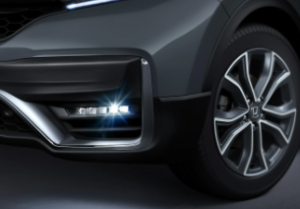 A Honda’s tires are expected to last for around 50,000 to 60,000 miles, which is usually three or four years of driving. The better they’re maintained, with monthly pressure checks and periodical rotations, the longer they’ll last. But sometimes even new tires sustain damage requiring them to be swapped out. Here are 3 clear signs you should visit your local Honda dealer for a set of fresh tires.
A Honda’s tires are expected to last for around 50,000 to 60,000 miles, which is usually three or four years of driving. The better they’re maintained, with monthly pressure checks and periodical rotations, the longer they’ll last. But sometimes even new tires sustain damage requiring them to be swapped out. Here are 3 clear signs you should visit your local Honda dealer for a set of fresh tires.
Is It Time for Your Honda to Get New Tires?
You Detect a Hidden Puncture
You never know what obstacles your tires might come across on the road. Punctures can happen, and sometimes they’re not immediately noticeable. If you notice that a tire is losing air inexplicably quickly, you might have found a micro-puncture. Have it checked by a technician.
How Climate Impacts Tire Inflation
Tires kept properly inflated last far longer. The recommended tire pressure is between 30 and 35 PSI (pound force per square inch) for most Honda vehicles, but check your user manual to know the proper PSI for your own model. In hotter climates, tires tend to over-inflate over time as the air inside expands, and colder climates have the reverse effect. Bear this in mind when monitoring your tires.
Too Much Tread Wear
Tires with treads worn too thin become dangerous to use, especially when driving on wet or icy road surfaces. So along with your tire pressure, also check your tread depth. Anything close to 2/32 of an inch is getting too thin. During winter the minimum recommended depth is closer to 5/32 of an inch.
How Tires Wear Unevenly
Various factors cause tires to wear down unevenly. Uneven wear is commonly due to the extra pressure of front or rear-wheel drive, and also additional weight at the front of most Hondas. Faults in wheel alignment or suspension can also lead to uneven tire wear. This is why you should get your tires rotated often, and also be sure to check the tread depth of all four tires during your monthly inspections.
Damaged Rubber
Good quality tires are very robust, but heavy knocks against curbs or over potholes can still cause damage. Tires that are structurally weakened by cuts or cracks are at risk of blowing out while you’re driving. So if you notice any deep cuts or cracks in the rubber, you should consider replacing that tire, especially if the cut’s so deep that you can see the cord underneath the rubber.
How Climate Harms Tire Rubber
Even the weather can damage tire rubber over time. Consistent heat and UV rays from the sun can evaporate various chemicals, drying the rubber out. Extremely cold weather, or regular fluctuations in temperature, can also wear the rubber down. Such conditions might eventually cause small cracks in the sidewalls of your tires. If you notice any kind of side-wall wear and tear, it’s time for replacements.
Visit Your Honda Dealer Each Winter
If you live somewhere with cold, snowy winters, then one important time for a fresh set of tires is when the temperature begins to drop. A special type of rubber and tread design gives snow tires at least a 20% increase in traction on slippery winter roads. Your local dealership will provide you with suitable winter tires, and can still keep your summer tires for the following spring.
Get your tires examined, rotated, or replaced today by certified Honda professionals. Head down to Kelly Grimsley Honda, a trusted local dealership where total customer satisfaction is our number one goal.




